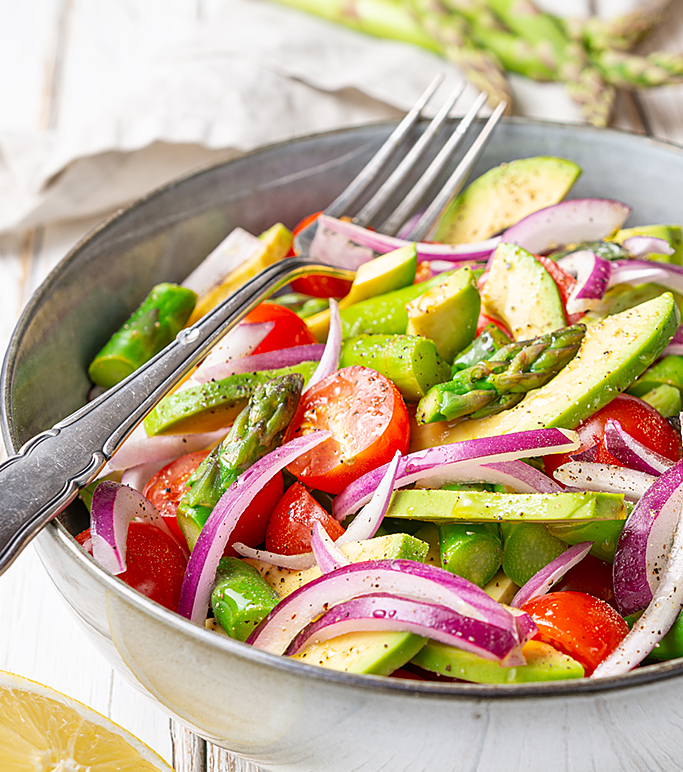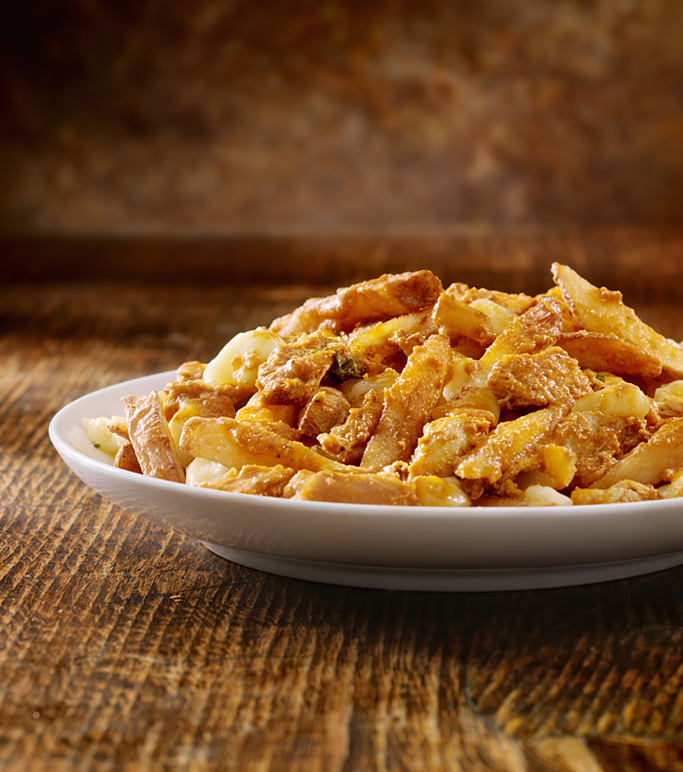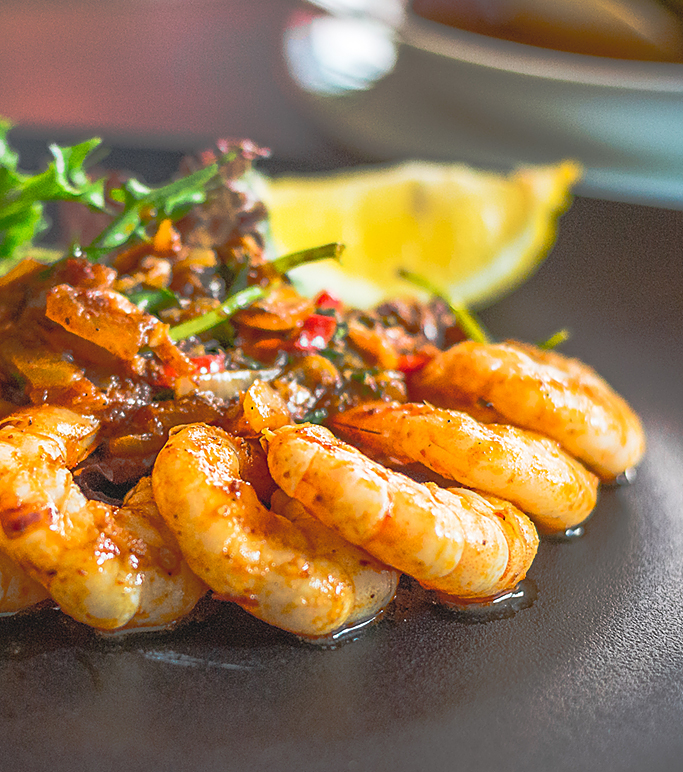An ancestral crop
The origin of the onion can be found in Central Asia from where it progressively travelled to Europe via Ancient Egypt and the Roman Empire. Onions were one of the first crops to be introduced to America by European explorers.
Today, it can be found all over the world.
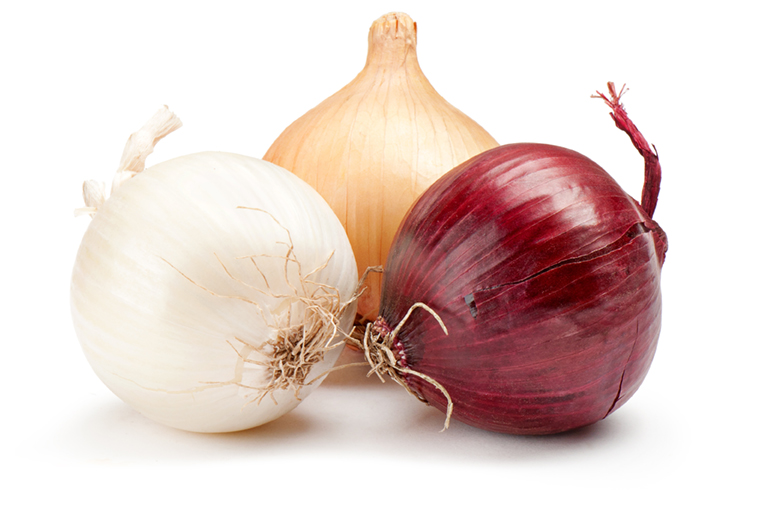
Health benefits
With their nutritional balance and low calorie content, onions have many health benefits. They are particularly rich in:
- antioxidant vitamins: A / B6 / C / E
- minerals and trace elements: potassium, phosphorous, calcium, manganese, selenium
- fibres: inulin
- sulphur compounds: quercetin
A genuine barrier against heart disease, certain cancers and other illnesses associated with ageing, onions help regenerate red blood cells and help the immune system function correctly.
Packaging
Available in regular, recyclable and biodegradable packaging

Sizes available 40-60, 50-70 and 70-90 mm
Daniel Cadiou sells conventionally and organically grown yellow and red onions
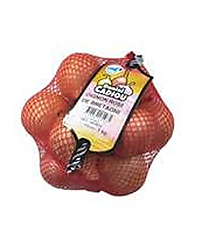
Gam+ cellulose net 500g/1kg
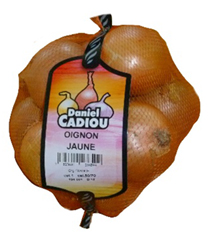
Gam+ 500g/1kg
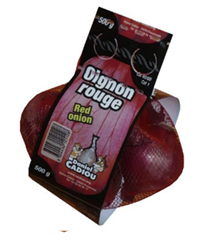
Girsac 500g/1kg
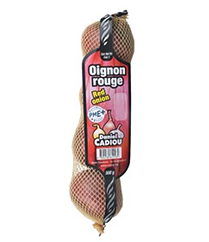
4 pieces cellulose net
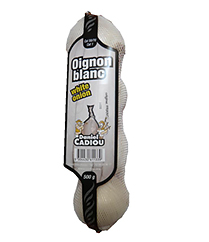
4 pieces cellulose net
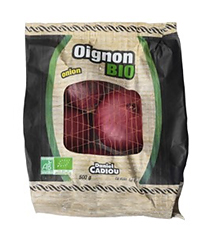
Paper bag 500g/1kg/2kg
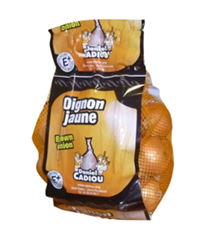
Dpack 2/3/5kg
Did you know?
- The expression “line up like onions” has nothing to do with rows of onions growing in the fields. It alludes to the fact that the Baron d’Oignon, the master of ceremonies at the Valois Court, used to shout: “Sirs, line up straight” when organising the lords into position. The lords therefore used to make fun of “Oignon’s lines”
- The French have an expression “se mêler de ses oignons” which means mind your own business and an American idiom appeared in the 1920s: “know your onions”, which means having a certain expertise. At the time, many varieties of onions were grown and the name changed depending on the region. “Knowing your onions” meant being familiar with the varieties cultivated in your region and, therefore, being an expert and knowing your business.
- The word “onion” comes from the Latin “unio”. Why “unio”? Simply because the onion is one of the rare alliums with an undivided bulb (which excludes the Traditional shallot): it is one.
Yellow onion
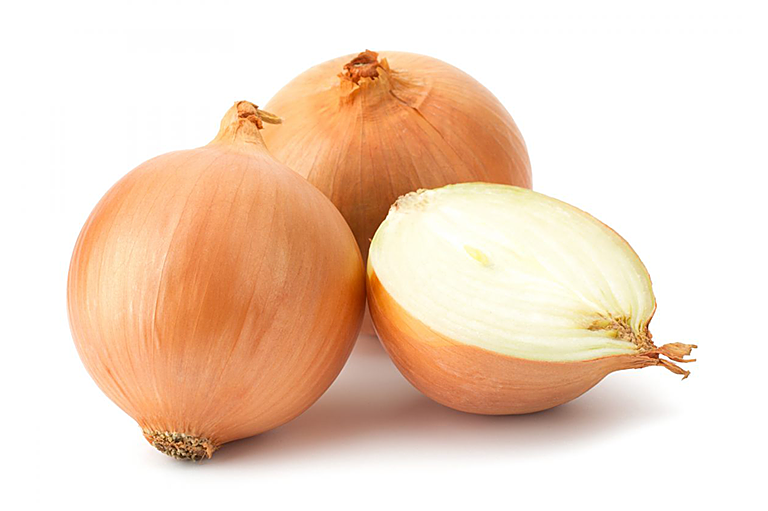
The yellow onion is a round-oval bulb with yellow-copper skin and white flesh.
It is the most consumed onion.
When cut, it releases a powerful smell and has a very pronounced flavour. This is why it is mostly eaten cooked. It is ideal for cooked and slow-cooked dishes as it gives a lot of flavour.
Calendar of availability
Yellow onions are sown in the spring and harvested at the end of the summer.
Store in a dry, dark place.
Red onion
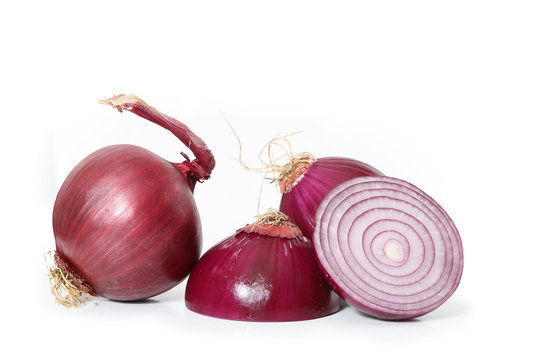
The red onion is a round flat bulb with red skin and white-violet flesh.
High in carbohydrates, it has a slightly sweet flavour which makes it ideal for eating raw, in uncooked dishes (salads, hamburgers, etc.).
Compared to other onion varieties, red onions generally have a higher antioxidant content.
Calendar of availability
Red onions are sown in the spring and harvested at the end of the summer.
Store in a dry, dark place
White onions
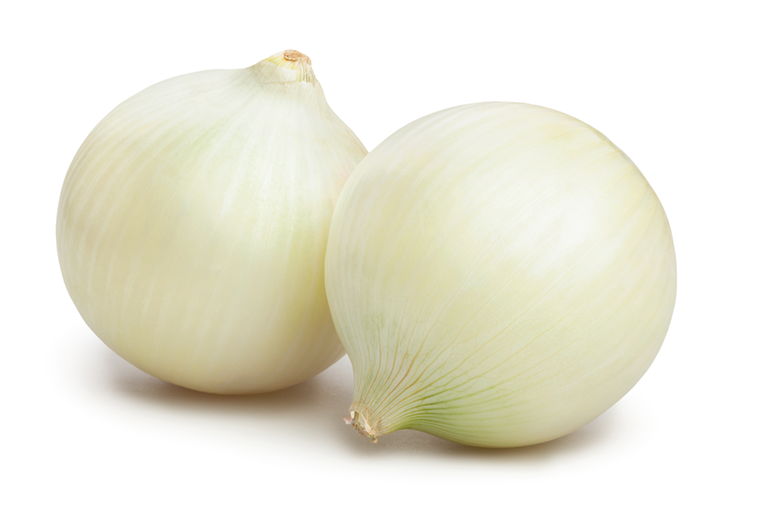
The white onion is a round-oval bulb with white flesh. Its white skin is thin which makes the onion fragile.
It is a very pungent onion that is mostly eaten cooked.
Calendar of availability
White onions are sown at the end of the winter and harvested in summer.
Store in a dry, dark place.

